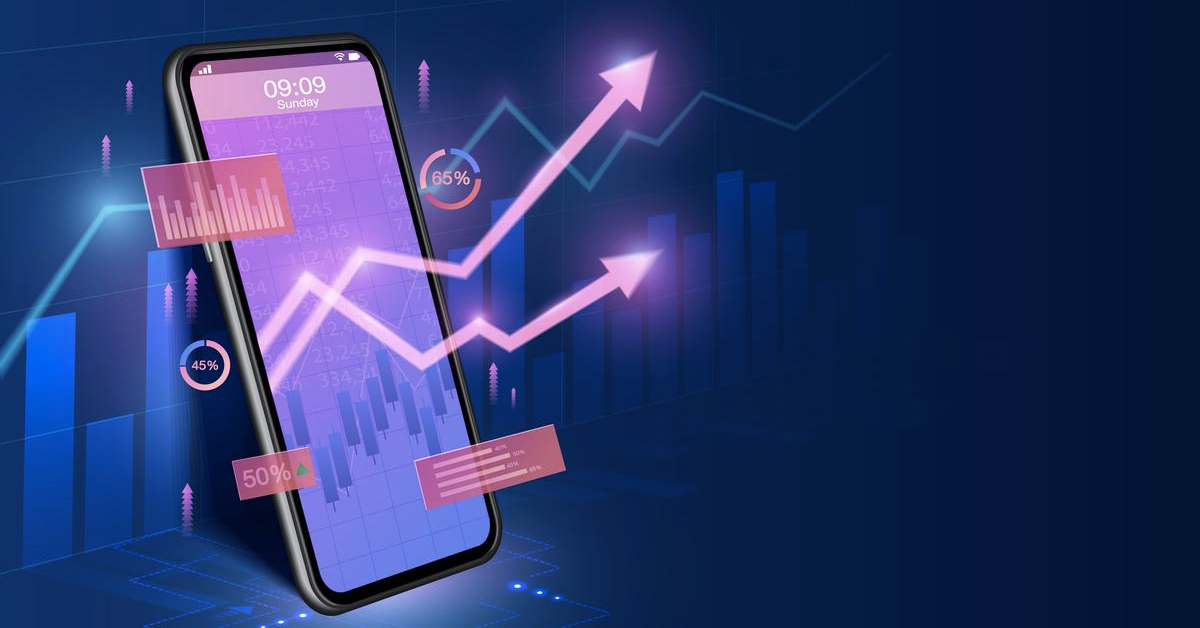An investment app is a mobile application that allows users to invest their money in various assets and instruments such as stocks, bonds, currencies, funds, cryptocurrencies, etc.
They usually provide a wide range of options, a user-friendly and intuitive interface, and can provide various tools for analyzing and managing a portfolio.
Investment apps have become popular in recent years because of their ease of use and the ability to assets with low commissions. They can also be helpful for novices who want to gain experience without much capital or experience with traditional banks.
In this article, we will cover some of the main key points of investment app development. Keep reading if you want to know more about how to create an investment app.
Relevance of investment app development
The development of investment apps is very relevant nowadays. First, with the development of technology and the spread of smartphones, mobile apps have become very popular and user-friendly. Investment apps allow users to quickly and conveniently manage, check the market, and make decisions about buying and selling assets.
Secondly, many people are interested but do not have enough knowledge and experience to work with traditional brokerage companies and banks. Investment apps provide access to tools and services with minimal initial and low commissions, making them more accessible to newcomers.
Third, with the uncertainty and volatility of the market, users can be better equipped to manage risk and protect. Investment apps can provide market information.
Also, as technology advances and new financial instruments emerge, investment apps can provide more innovative and flexible solutions, such as automated portfolios, trading robots, and so on.
Principles of investment apps
The principles of work can differ depending on the specific project, but the general principles include the following steps:
- Registration and account opening: The user must register and open an account, which usually requires providing information about themselves, their finances, and their goals.
- Choice of assets and instruments: After opening an account, the user can choose the assets and instruments. This can be stocks, bonds, ETFs, funds, cryptocurrencies, etc.
- Funding the account: The user must fund their account. Transferring money from a bank account or credit card usually does this.
- Investing: Once the account has been funded, the user can money in selected assets and instruments. Apps usually provide a user-friendly interface to view current prices, charts, and other information that can help make informed decisions about buying and selling assets.
- Portfolio management: The user can manage their portfolio by selling and buying assets, reallocating funds between different instruments, etc.
- Getting reports and information: Investment apps can provide various reports, statistics, news, and analytics that help the user to make decisions and watch the market.
- Usually, investment apps provide their services for a fee or a percentage of the amount, but they can also be free, for example, if they receive income from other sources.
List of the most popular investment apps
There are many interesting projects that can help users invest their money in various assets and instruments:
Robinhood
Benefits
- Stocks, ETFs, and cryptocurrencies
- User-friendly interface and easy process
- Free to use
- Support for many instruments and assets
Disadvantages
- Limited support for options and other instruments
- Lack of real-time trading for the free account
- Commissions for trading cryptocurrencies
- Not always a reliable system
Webull
Advantages
- Support for multiple instruments and assets
- Providing trading information and educational materials
- Free use
Disadvantages
- Lack of options
- Not always a reliable system
Acorns
Advantages
- Automated
- Rounding and change from purchases
- Choice of a portfolio
- Free use for students
Disadvantages
- High fees
- Limited choice of instruments
Necessary features of investment apps
Investment apps can have various features. We have listed some of the necessary ones below:
- Various assets: stocks, bonds, ETFs, indices, funds, cryptocurrencies, etc.
- User-friendly interface: easy navigation, easy registration, and login process, intuitive process, etc.
- Analytics and educational materials: access to information and analytics on various assets, as well as educational materials.
- Automated: allows users to automatically money according to their chosen portfolio or strategy.
- Secure and Protected: Secure registration process, password, and personal data protection, as well as secure processing of financial transactions.
- Variety of depositing and withdrawing methods: a variety of depositing and withdrawing methods, including bank cards, e-wallets, bank transfers, etc.
- Low commissions and minimal extra charges for the users.
The development process of an investment app
The development process may vary depending on the specific product and its functional requirements. However, in general terms, it includes the following steps:
- Requirements definition: defining the main functions and features, its target audience, and design requirements.
- Design: design layouts and prototypes are developed; functional units and interfaces are defined.
- Development: programming and code creation, database and server infrastructure creation.
- Testing on different devices, and operating systems, as well as different usage scenarios.
- Debugging: after testing, errors and bugs are identified that need to be fixed.
- Release: at this point, the project is ready for release and publication.
- Support and updates: after the release, it is important to fix bugs, improve functionality and maintain compatibility with new versions of operating systems.
An important point is to follow the relevant standards of security and protection of user data.
How to monetize your investment app?
There are several ways to monetize your app. The main monetization methods are as follows:
- Stock commissions: commissions from the sale of stocks or other financial instruments.
- Subscription to a premium version with additional features or services, such as a personalized financial advisor.
- Advertisements that will generate revenue when clicked or shown.
- Affiliate programs: interacting with other financial institutions; offering services such as insurance or lending, and receiving a commission for each successful collaboration.
- Data aggregation: you can use data to analyze the market and provide reports and analytics to third parties for a fee.
- Other services: paid financial literacy classes or personalized portfolios for a fee.
Each of these methods of monetization has its advantages and disadvantages, and the choice of a particular method depends on specific goals and audiences.
Conclusions
Investment app development has great promise as more and more people seek to invest their money in various financial instruments. There are many opportunities that can cater to different needs.
However, development also has its challenges and risks. Competition in the app market is high, and it is important to create products that are different and can attract users. It is also important to consider regulation, which can limit certain features and capabilities.
The idea has the potential to succeed but requires careful market research, analysis of user needs, and careful design and development of a product that is attractive and functional for a wide range of users.






